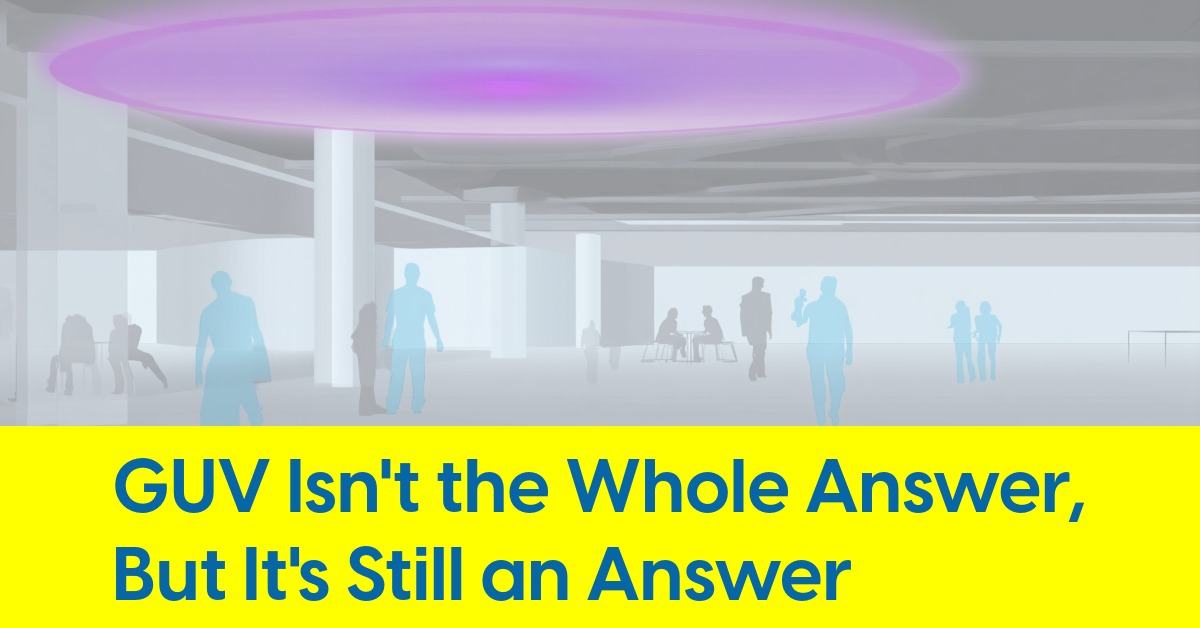December 26, 2023
Inside the Gateway Arch's Modernized Lighting System
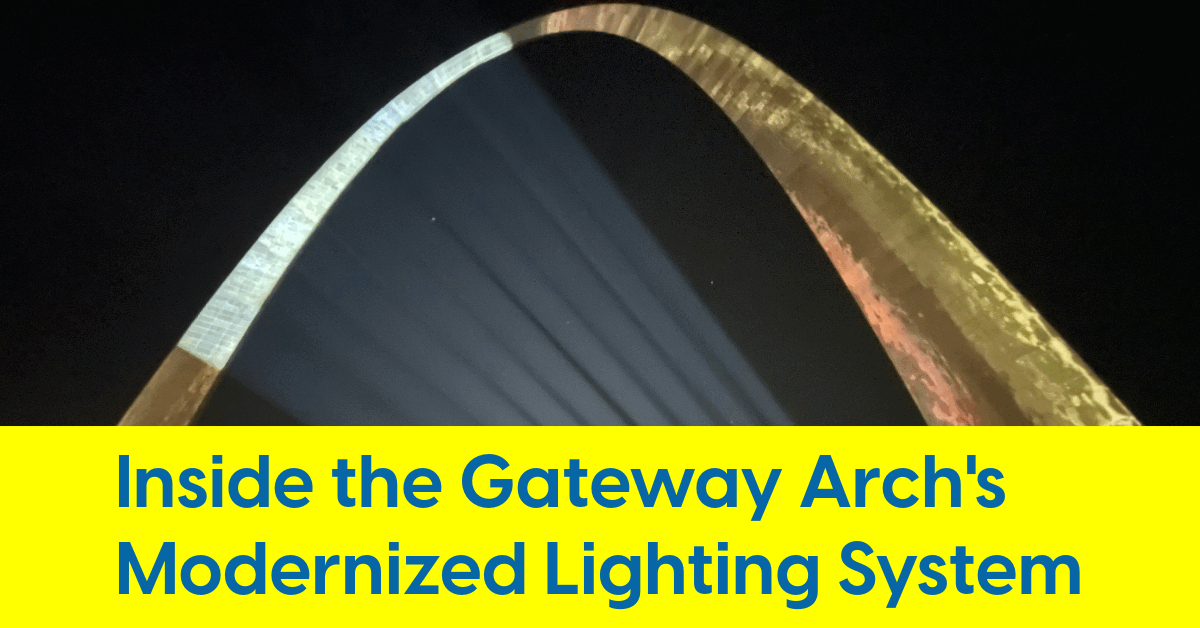
Photo credits: Reed Burkett Lighting Design (RBLD)
RBLD unveils the intricate details of the lighting, controls and advanced design concepts
Since October 16, the Gateway Arch in St. Louis, Missouri, a symbol of the American Midwest's pioneering spirit, has been dark. This temporary blackout was planned in order to accommodate a major upgrade, aiming to revamp the monument's lighting. Renowned as the world's tallest arch and Missouri's tallest building, the 630-foot-tall Gateway Arch is made of stainless steel. Its unique weighted catenary arch shape has been a prominent feature of the St. Louis skyline since its completion in 1965.
The recent upgrade marks the Arch's transition to LED lighting, a first for the monument. This shift offers several benefits in energy efficiency and the impact of the lighting project. Coinciding with the Christmas season, the new LED lights were activated last week, showcasing the improved lighting design.
Missouri-based architectural lighting design firm, Reed Burkett Lighting Design (RBLD), with a long-standing relationship with Gateway Arch stakeholders, led this transformative project. RBLD first handled the monument's lighting design in 2001 and has been central to various updates since then. Their expertise in architectural lighting was key to this latest enhancement. Collaborative efforts with Technical Productions, Inc. provided essential technical support, installation services, and advanced lighting control systems.
Before & After: The upgrade
First, the LED conversion provides a 60% overall energy reduction even though the design has increased the total number of luminaires. Previously, each lighting instrument included a 7,000 Watt Xenon source. Today, each lighting instrument consumes only 1,200 Watts, resulting in significant energy savings.
Longevity of the source plays a significant role in this lighting upgrade. The Xenon source life was only 1,000 hours, and with the replacement cost of each lamp being around $1,400, it was an expensive maintenance requirement multiple times per year. The new LED sources have an expected life of 30,000 hours, which will result in significant maintenance cost savings. Now that there is no routine relamping cycle, if the fixtures fail, they will need to be completely replaced, but the job is simplified because of the lighter 140-pound fixtures. The previous luminaires weighed over 400 pounds and required cranes for installation. The luminaires are mounted to rails with position markers, so in the case of a failure over the course of the system life, replacement will not be such a “heavy lift”.
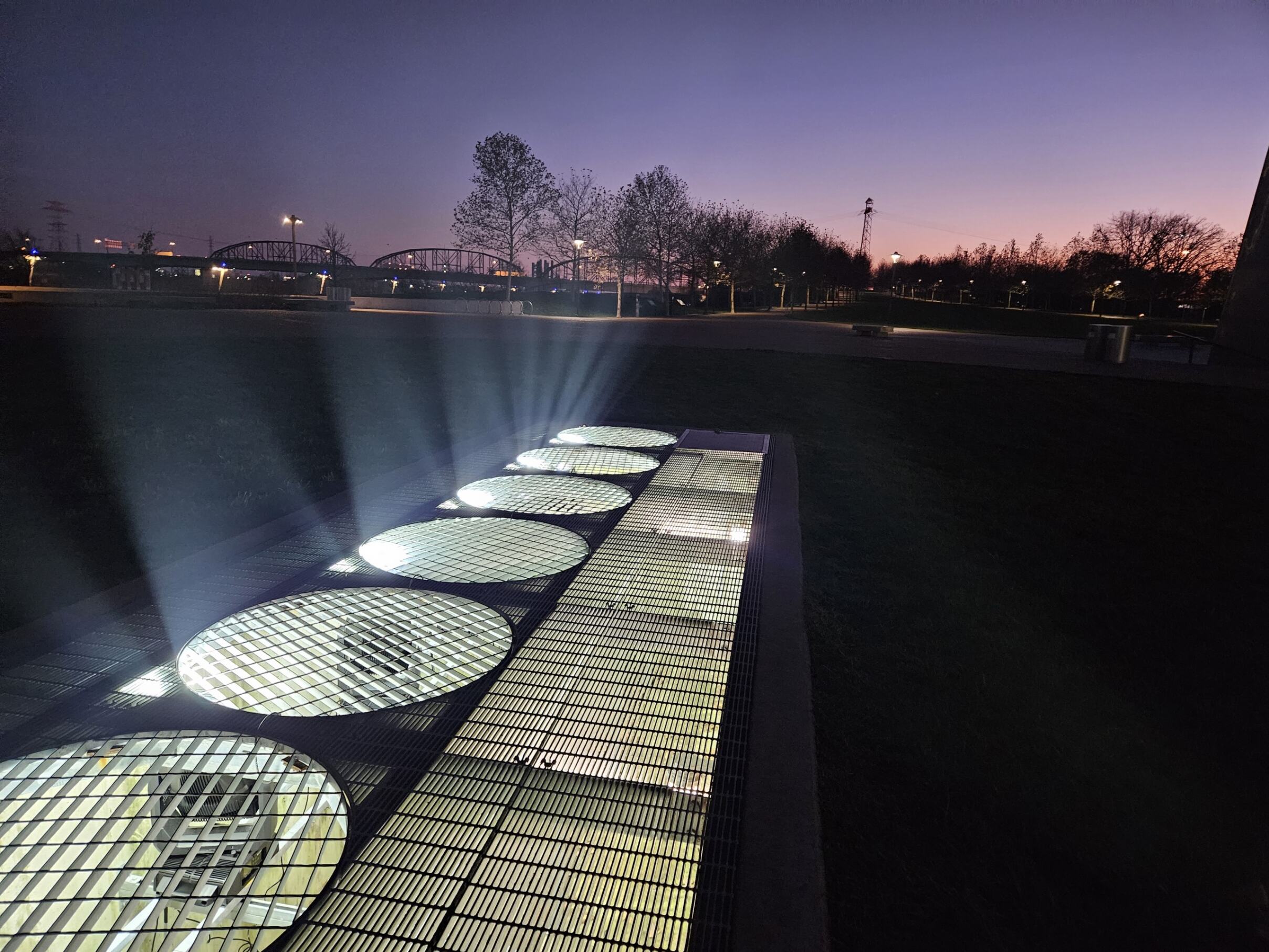 |
| Above the pit |
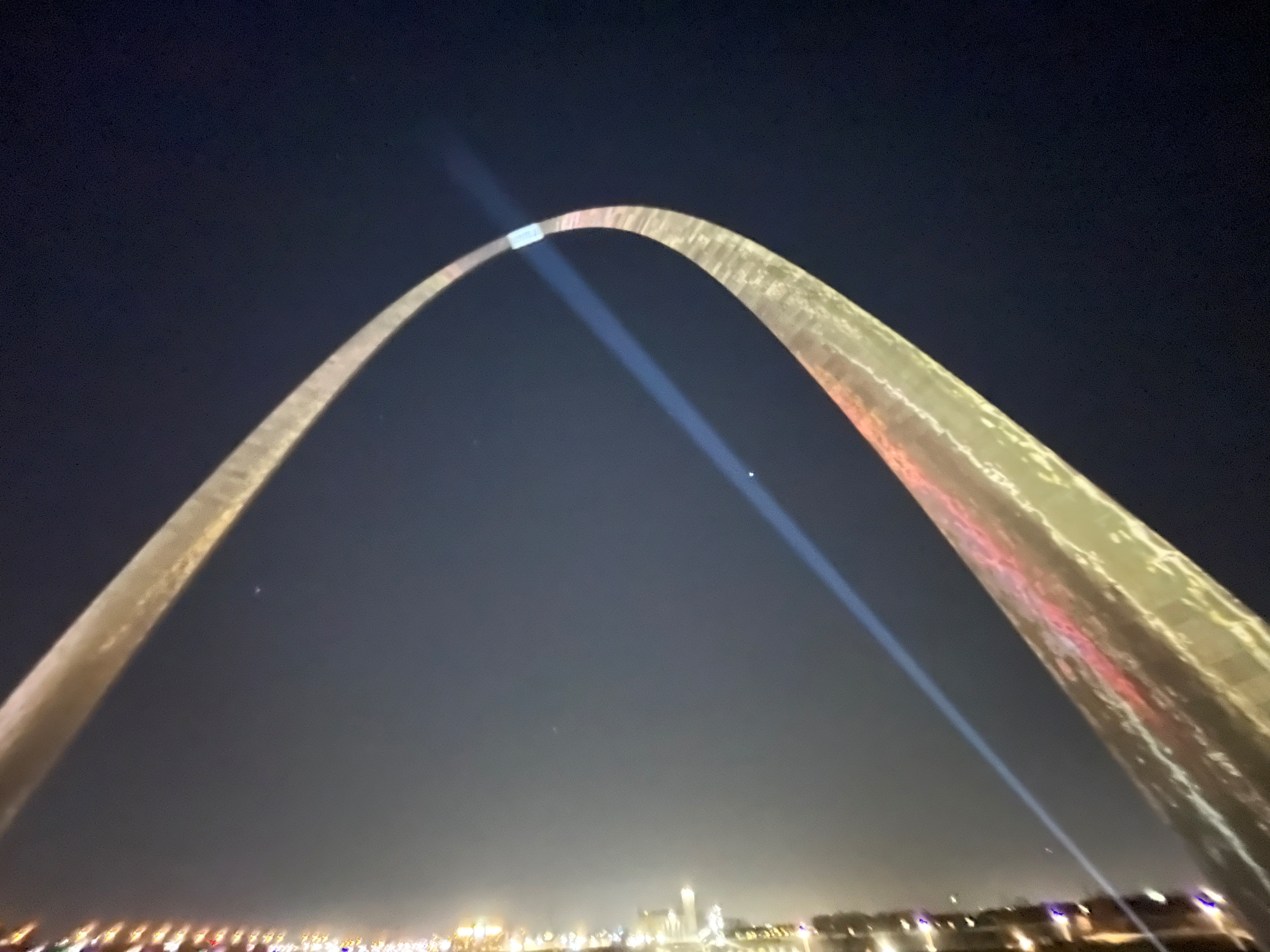 |
| First luminaire |
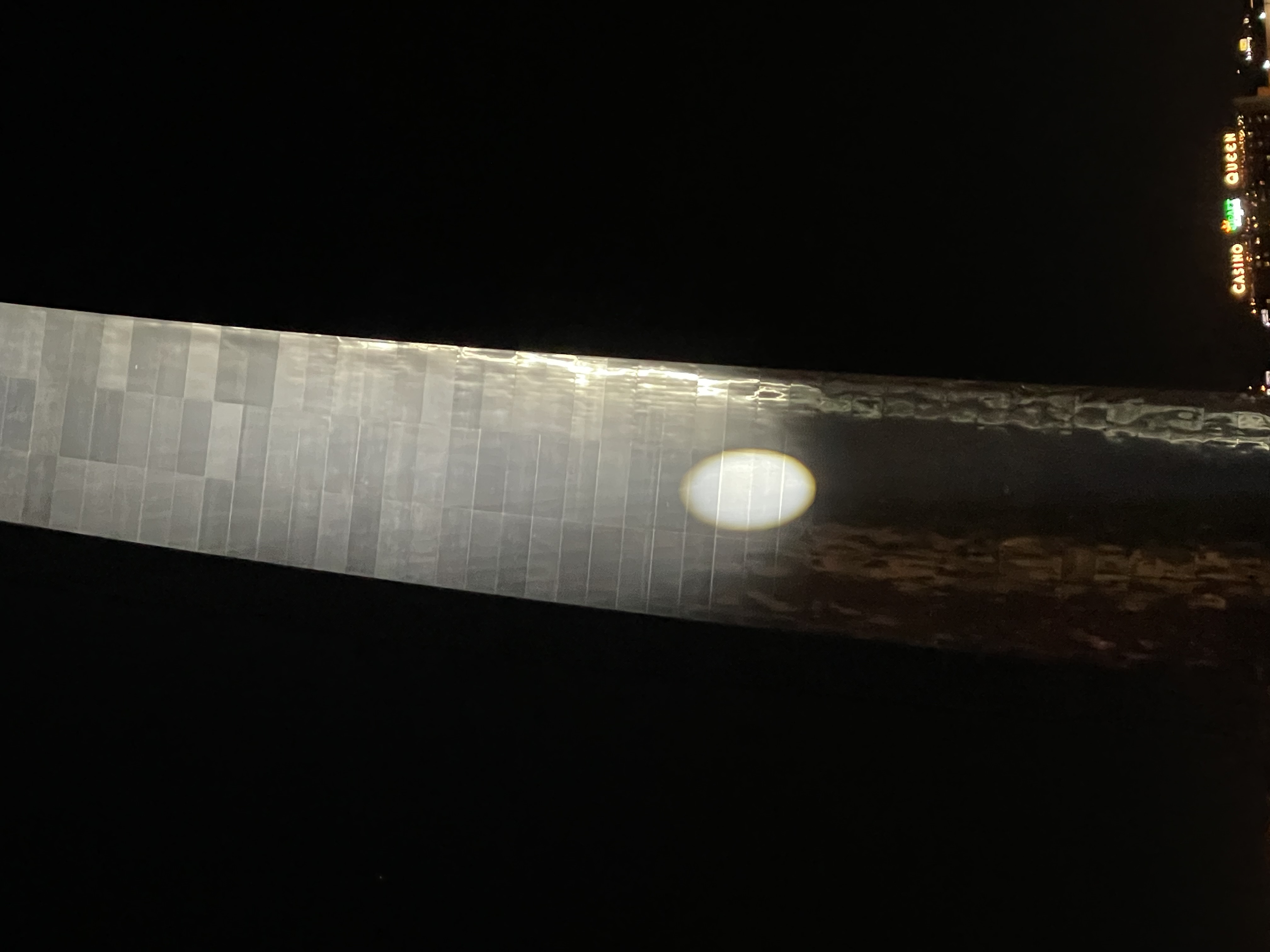 |
| Before applying gobos |
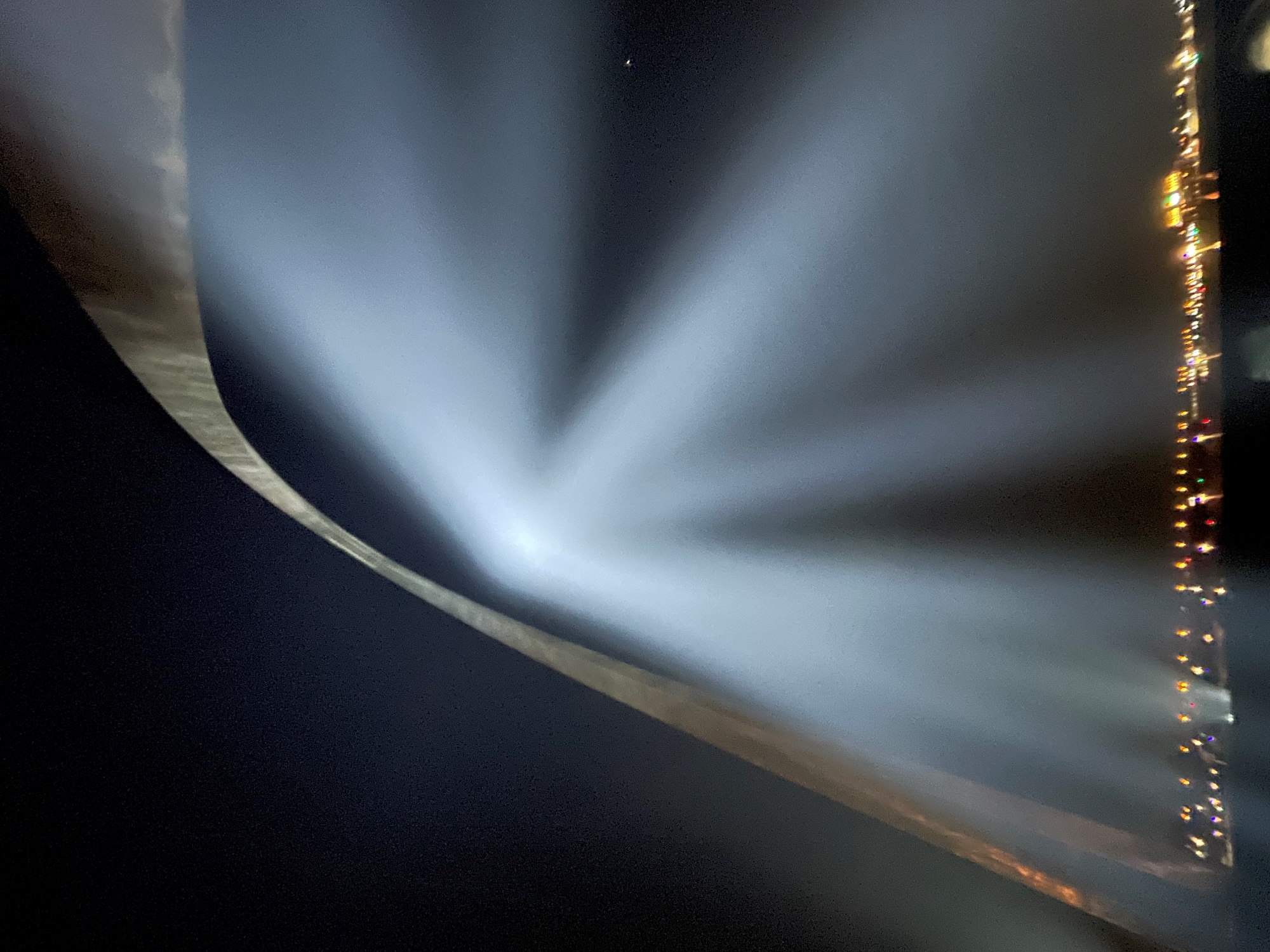 |
| Before focus |
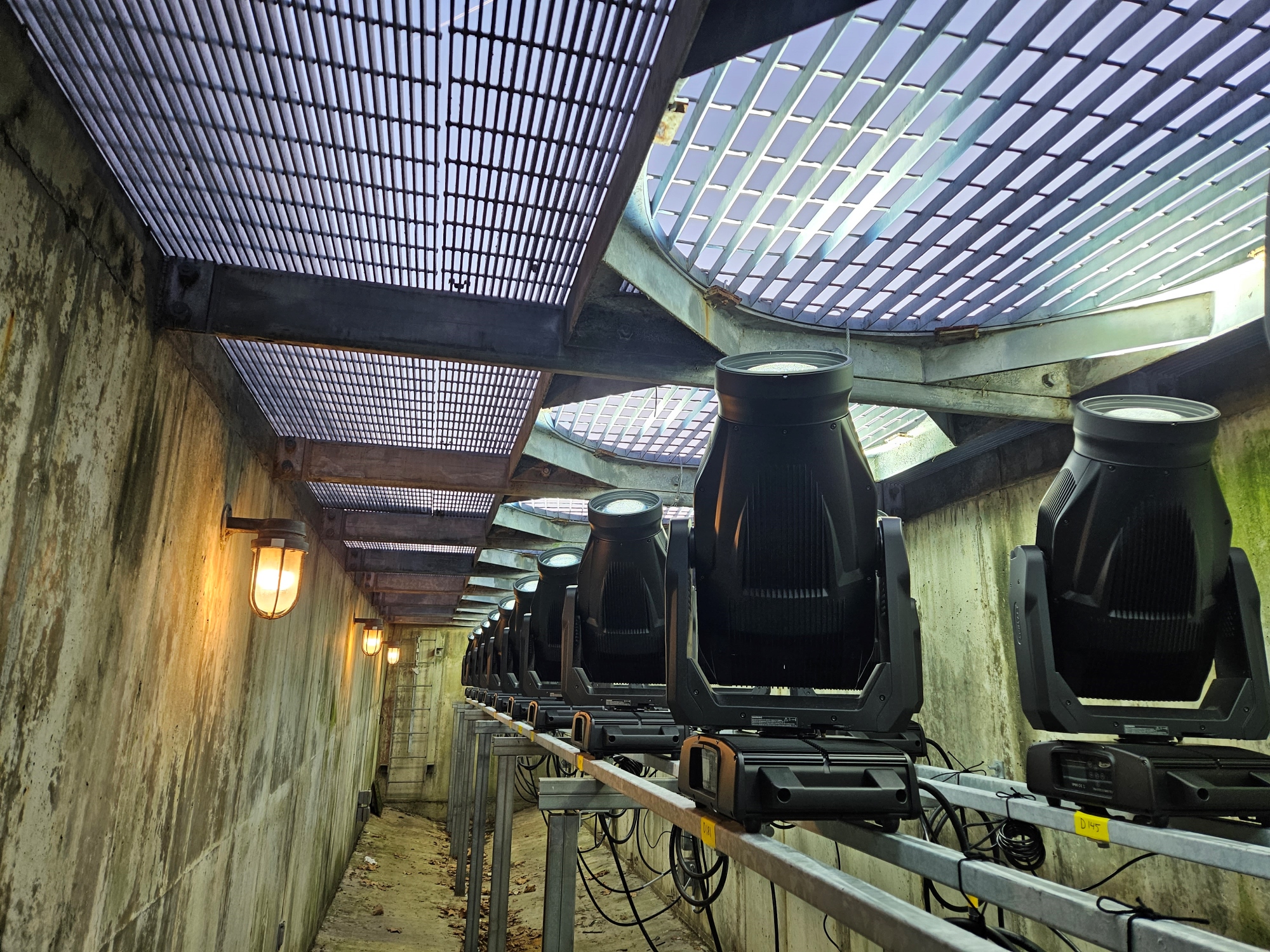 |
| In the pit |
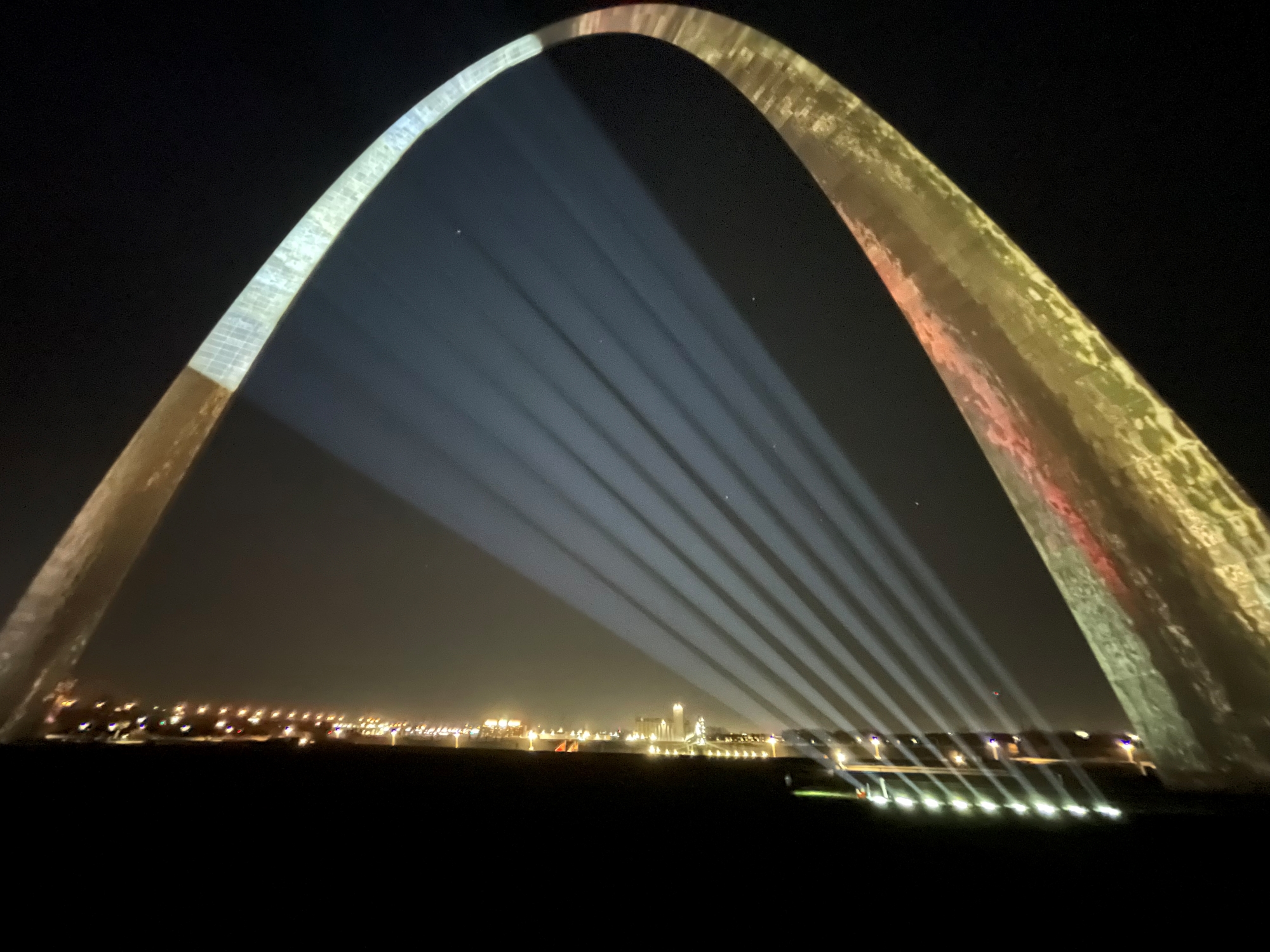 |
| One side, cross-aimed |
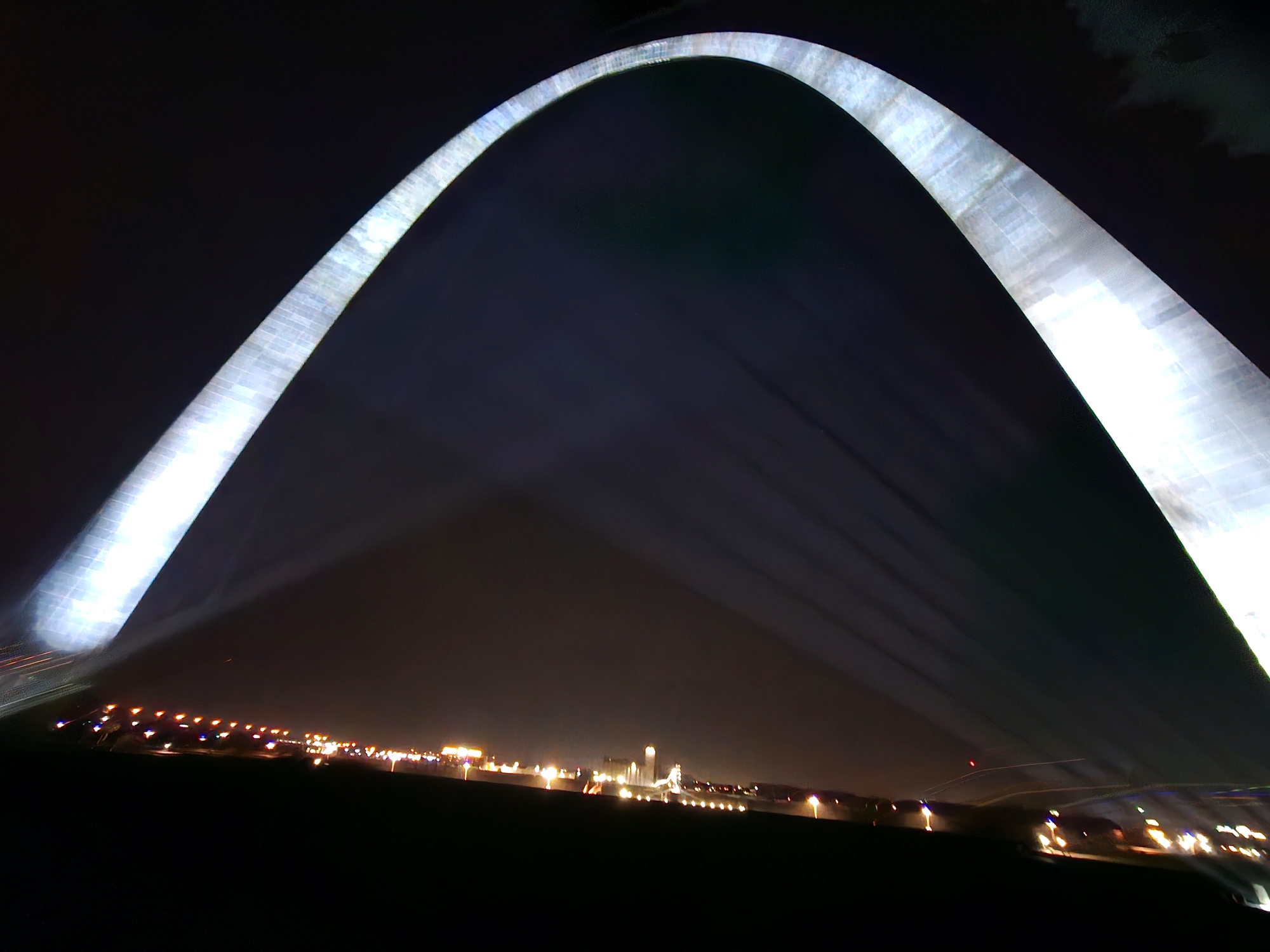 |
| The Arch is lit |
Photo credits: Reed Burkett Lighting Design (RBLD)
Lighting & Controls by Elation & ETC
The new Elation Lighting Proteus LED luminaires are motorized; during the daytime, the lights will rest in a position that protects the lenses and reflectors from direct sunlight and weather, minimizing degradation. When illuminated, the motorized head will move to its predetermined position for illuminating the arch. The lights are set to fire consecutively from the bottom of the arch to the top, creating a 30-second lightshow at the beginning of each night. In the previous design, the lighting instruments were installed in underground pits. The pits are being reused for the new lighting solution, and the rails have been modified to accept more fixtures.
To achieve the required brightness, each spot on the Arch is now illuminated with two fixtures. This redundancy provides practical double coverage in the event of a fixture failure. This is an improvement over the Xenon solution, in which lamp failures left a gap in the continuous illumination of the Arch.
The new lighting is dimmable and employs an Electronic Theater Controls (ETC) Mosaic DMX control system. The system uses electronic gobos to create lighting patterns which can be stretched or shrunk to fit the outline of the Arch. This beam shaping greatly reduces spill light, which improves the atmosphere for migratory birds. St. Louis – and the Arch – sit on the banks of the Mississippi River and the largest migratory bird route in North America.
Although the system is LED and DMX, there is no color-changing. Dedicated white light (not RGB) is necessary to achieve the light levels required for these long throws. Furthermore, the lights on the Arch are routinely turned “off” during peak bird migration seasons around April and September.
Design
The design is different for each side of the Arch. The west side faces the City of St. Louis, and the primary viewing angle is from a position aligned with the center of the Arch. Because of the higher ambient light levels on the City-facing side, there are a total of 24 lighting units in each of the two west pits. Most of these lights are cross-aimed to accomplish the best glare-free illumination from the primary viewing angle.
The east-facing side of the Arch is oriented toward the Mississippi River. On this side, there are a total of 14 lighting units in each of the two pits. Fewer luminaires are used on the east side because of viewing angles, aiming angles, and the lower ambient light level. From the east side, the monument is primarily visible from a distance and from the sides, where two bridges cross the river. A grazing lighting solution is employed here, which has shorter throw distances from near the base of each leg of the Arch. Ambient light levels are low on the east side, where the dark Mississippi River is up to 2,000 feet wide.
“The story today is not necessarily about how beautiful we have made the Gateway Arch – we did that before, back in 2001 – but today’s story is about how we made it better,” summarizes Lisa J. Reed, Principal of Reed Burkett Lighting Design.


